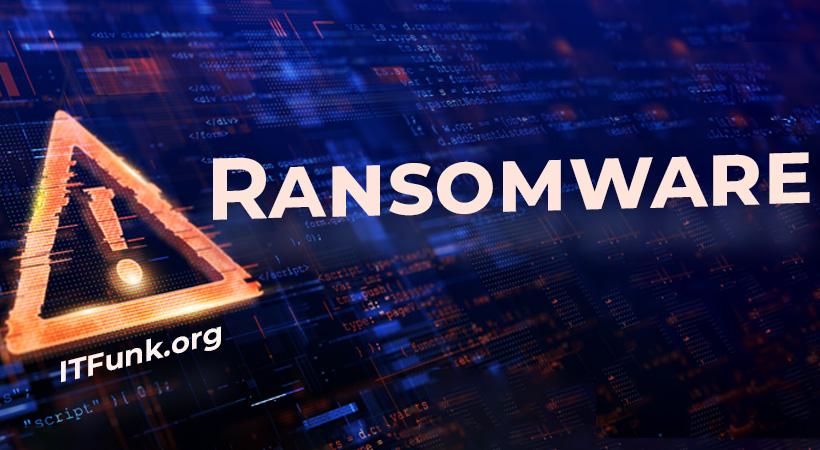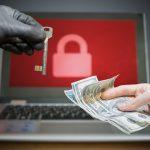Ransomware is a malicious type of software designed to block access to a computer system or data until a ransom is paid. It primarily targets individuals, businesses, and organizations, causing significant disruption and financial loss. This malware encrypts files and demands payment from the victim in exchange for decryption keys. One such strain of ransomware is Nodeep, which presents a substantial threat to users by locking their data and demanding a ransom for its release.
The Threat: Nodeep Ransomware
Nodeep ransomware operates by infiltrating a victim’s system, encrypting their files, and demanding a ransom for the decryption key. It typically spreads through malicious email attachments, compromised software downloads, or exploit kits that take advantage of vulnerabilities in the operating system or software applications. Once installed, Nodeep executes its payload, which includes scanning the system for files to encrypt.
After installation, Nodeep ransomware performs several actions:
- File Encryption: It encrypts various file types, including documents, images, and databases, rendering them inaccessible. Common file extensions affected by Nodeep include
.nodeep, indicating that these files have been compromised. - Ransom Note: Once the encryption process is complete, Nodeep leaves a ransom note in each affected folder. This note typically contains instructions on how to pay the ransom and recover the files, along with threats to delete the data if payment is not made within a specified time frame.
The consequences of Nodeep’s presence on a system are severe. Victims may lose access to critical data, face operational disruptions, and experience financial losses due to ransom payments. Moreover, paying the ransom does not guarantee the recovery of files, and it can encourage further criminal activity.
Ransom Note Overview
The ransom note left by Nodeep is a critical component of the attack. It often appears in a plain text file or an HTML document, detailing the amount of money the victim must pay, usually in cryptocurrencies like Bitcoin, to regain access to their files. The note may include threats such as:
- Time Limit: A deadline for payment, after which the ransom increases or files will be permanently deleted.
- Contact Information: An email address or a chat platform link where victims can communicate with the attackers.
- Payment Instructions: Detailed steps on how to make the payment, emphasizing the anonymity and security of cryptocurrency transactions.
Text in the ransom note:
Email 1:
nodeep@tutamail.com
Email 2:
nonodeep@protonmail.com
Your id: –
Send messages to both emails at the same time
So send messages to our emails, check your spam folder every few hours
If you do not receive a response from us after 24 hours, create a valid email, for example, gmail,outlook
Then send us a message with a new email
General Purpose and Infiltration Methods
The primary goal of Nodeep ransomware is financial gain through extortion. It infiltrates systems by leveraging common tactics:
- Phishing Emails: Users may receive deceptive emails containing malicious links or attachments that, when clicked, install the ransomware.
- Malicious Websites: Visiting compromised or malicious websites can result in drive-by downloads, where the ransomware is installed without the user’s knowledge.
- Exploits: Attackers may use vulnerabilities in software or operating systems to deploy ransomware on unsuspecting users’ systems.
The threat posed by Nodeep is twofold: it affects the infected system’s functionality and data integrity while putting the individual or organization at risk of data loss and financial strain. Ransomware is aptly named for its modus operandi of demanding a ransom for data restoration.
Symptoms of Nodeep Ransomware Infection
Users may notice several symptoms indicating the presence of Nodeep ransomware, including:
- Inability to access files or programs.
- The appearance of unfamiliar file extensions (e.g.,
.nodeep) on previously accessible files. - Ransom notes in various folders on the system.
- Sluggish system performance or frequent crashes.
Detection Names for Nodeep Ransomware
To determine if Nodeep ransomware is installed on a computer, users can look for the following detection names:
- Nodeep
- Win32/Nodeep
- Ransom.Nodeep
Similar Threats
In addition to Nodeep, users may encounter other ransomware variants, including:
- Locky: Known for its widespread attacks and use of various file extensions.
- WannaCry: A notorious ransomware strain that exploits vulnerabilities in Windows systems.
- Cerber: This ransomware is known for its complex encryption methods and large ransom demands.
Comprehensive Removal Guide for Nodeep Ransomware
If you suspect that your system is infected with Nodeep ransomware, follow these detailed steps to remove it:
Step 1: Disconnect from the Internet
Immediately disconnect your device from the internet to prevent further communication with the ransomware servers and to stop it from spreading.
Step 2: Enter Safe Mode
- Restart your computer.
- As it boots up, repeatedly press the F8 key (or Shift + F8 on some systems) to access the Advanced Boot Options.
- Select Safe Mode with Networking from the list and press Enter.
Step 3: Use Task Manager
- Press Ctrl + Shift + Esc to open the Task Manager.
- Look for any suspicious processes related to Nodeep, such as
nodeep.exeor any unknown processes. - Right-click on the process and select End Task.
Step 4: Remove Nodeep Ransomware
- Open Control Panel and go to Programs > Programs and Features.
- Look for suspicious programs that you do not remember installing. Right-click on them and select Uninstall.
- Check your computer for any recently added software that could be associated with the ransomware.
Step 5: Scan Your Computer
- Download and install a reputable anti-malware tool like SpyHunter.
- Perform a full system scan to detect and remove any remnants of Nodeep ransomware.
- Follow the software’s instructions for removing detected threats.
Step 6: Restore Your Files
If you have backups, restore your files from a backup made prior to the infection. Ensure the backup is clean and free of malware before restoring.
Further Preventive Actions
To prevent future infections, consider the following measures:
- Regular Backups: Keep up-to-date backups of your important files on an external drive or cloud service.
- Security Software: Use comprehensive anti-malware solutions like SpyHunter to protect your system.
- Stay Informed: Educate yourself about phishing tactics and avoid clicking on unknown links or downloading attachments from untrusted sources.
- Software Updates: Regularly update your operating system and applications to patch vulnerabilities.
Conclusion
Nodeep ransomware represents a significant threat to computer users. By understanding its operation and following the removal guide provided, individuals can protect themselves from potential financial and data loss. SpyHunter is highly recommended for scanning and removing ransomware threats. Download it today to keep your system secure.





